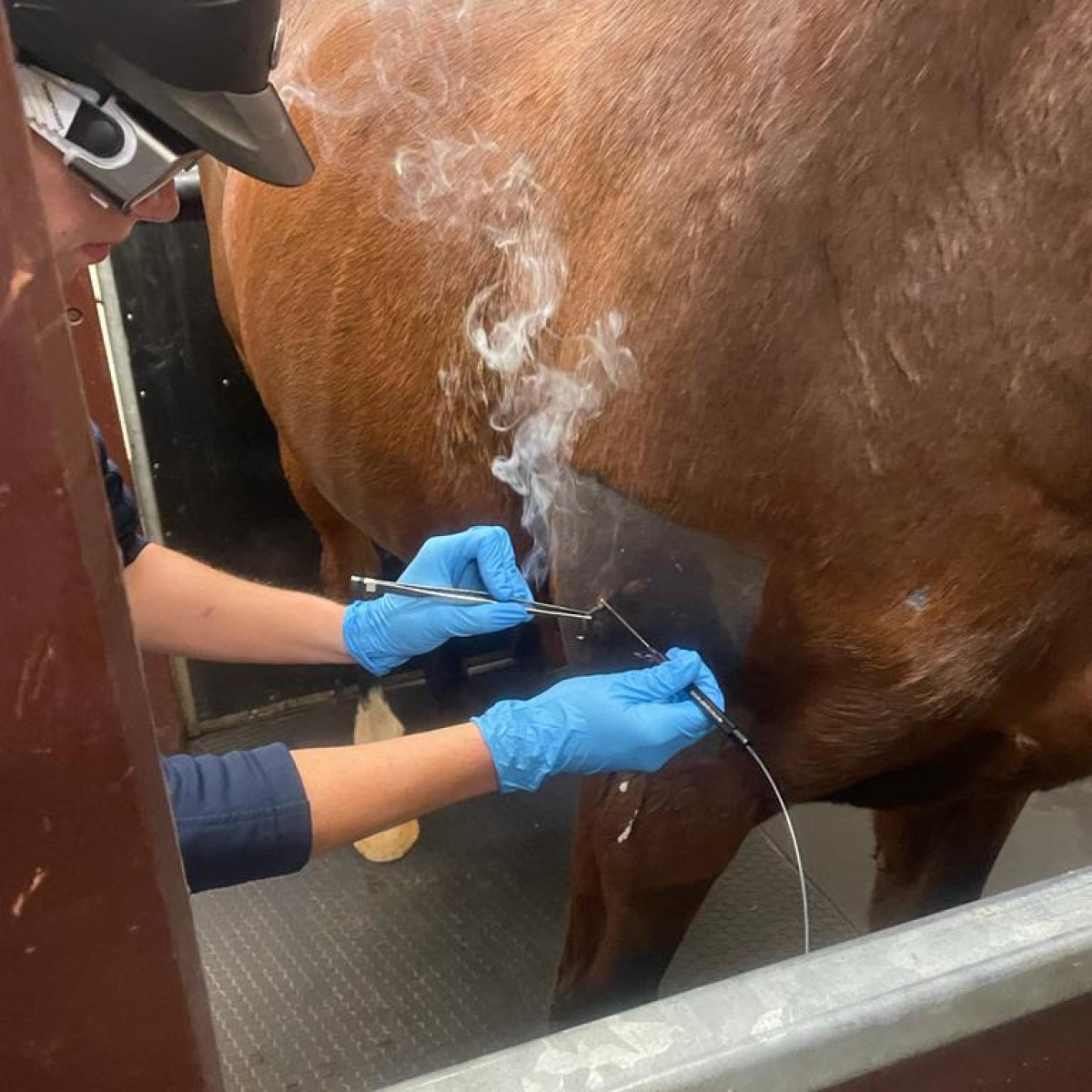Equine Therapy: Exactly How It Aids Build Self-confidence and Psychological Strength
Equine Therapy: Exactly How It Aids Build Self-confidence and Psychological Strength
Blog Article
Reviewing the Effectiveness of Laser Therapy in Horse Therapy for Injury Recovery
The assessment of laser therapy's efficiency in equine injury rehab pivots on multiple elements, consisting of healing time, pain reduction, and tissue regeneration. Veterinarians regularly observe premium outcomes with laser treatment compared to traditional techniques, positioning it as a critical component in equine care.
Comprehending Laser Treatment
Laser treatment has come to be a critical device in veterinary medicine, specifically in the therapy of equine problems. Known for its non-invasive nature and effectiveness, laser therapy entails the application of details wavelengths of light to promote tissue repair and lower inflammation. This therapeutic method is increasingly preferred for its ability to speed up the recovery procedure in horses experiencing a selection of musculoskeletal injuries and persistent problems.
The main system behind laser therapy is its capability to enhance mobile functions. When laser light penetrates the skin, it is absorbed by mitochondria, the powerhouse of cells, which causes enhanced production of adenosine triphosphate (ATP) This biochemical power increase helps with mobile fixing and regrowth. Additionally, laser treatment promotes vasodilation, enhancing blood flow and oxygen distribution to broken tissues, hence accelerating recuperation.
In equine medicine, laser treatment is particularly beneficial for conditions such as tendonitis, osteo arthritis, and injury healing. The technique is admired for its pain-relieving homes, enabling horses to regain mobility and feature much more quickly. Veterinarians additionally value its very little adverse effects compared to various other treatment methods, making it a reputable and risk-free option for equine treatment.

How Laser Therapy Functions

Upon absorption, these photons cause a series of biochemical modifications, boosting mitochondrial feature and resulting in boosted adenosine triphosphate (ATP) production. This increase in ATP accelerates cellular metabolic process, promoting tissue repair work and regeneration. In addition, laser treatment regulates inflammatory reactions by affecting cytokine levels and minimizing oxidative anxiety, thus relieving discomfort and swelling.
An additional considerable aspect of laser therapy is its function in improving microcirculation. The treatment promotes vasodilation, boosting blood circulation and oxygen distribution to broken cells (Equine Therapy). This helps with the elimination of cellular particles and sustains the expansion of fibroblasts and collagen synthesis, important for wound healing
Clinical Evidence
The efficacy of laser treatment in equine therapy has been confirmed through numerous clinical researches, showcasing its restorative prospective throughout a variety of conditions. Several regulated trials and empirical researches have actually documented considerable renovations in cells repair service, pain decrease, and general recovery timelines. A research carried out by Turner et al. (2012) showed that horses treated with low-level laser therapy (LLLT) for tendon injuries displayed sped up recovery compared to those receiving conventional treatments. The research highlighted a significant reduction in inflammation and enhanced collagen development. see this here
Similarly, research by Johnson and coworkers (2015) concentrated on equine muscle injuries, exposing that laser therapy dramatically sped up muscle fiber regrowth and reduced muscle mass tightness. Medical assessments have revealed that laser treatment can relieve persistent problems such as osteoarthritis.
Veterinarian Insights

Vets also value the adaptability of laser treatment. She directs out that laser therapy can be tailored to the certain demands of each equine, making sure ideal end results.
In addition, vets value the capability to integrate laser therapy with other treatment modalities. This multimodal strategy can boost overall therapy efficacy, supplying a comprehensive remedy for equine rehabilitation. Such endorsements from experienced specialists underscore the growing acceptance and application of laser therapy in equine medicine.
Practical Factors To Consider
A key facet of executing laser find out here now treatment in equine treatment entails recognizing the useful considerations that ensure its efficiency and security. It is important to pick the appropriate laser device, as different kinds differ in wavelength, power, and infiltration depth. Veterinarians should be skilled in these specifications to tailor therapy protocols properly to every injury kind
In addition, the regularity and period of laser therapy sessions require cautious preparation to maximize therapeutic advantages while reducing any type of potential negative impacts. Regular monitoring of the horse's response to therapy can assist required adjustments in the treatment regimen. Developing a secure and regulated atmosphere during therapies is likewise important to avoid unintended exposure to laser discharges, which might damage both the horse and the handler.
Training and certification of workers providing laser treatment are extremely important to guarantee correct technique and to promote security requirements. Furthermore, preserving precise records of each session, including laser setups and observed results, is vital for assessing the total efficiency of the therapy and for making data-driven decisions.
Conclusion
Laser treatment has become a reliable technique in continue reading this equine injury recovery, using substantial benefits in recovery time, pain relief, and tissue recovery. Scientific researches emphasize substantial enhancements in conditions such as tendonitis and osteo arthritis, credited to boosted cellular feature and boosted ATP manufacturing. Vet observations affirm these findings, highlighting exceptional results contrasted to typical treatments. For optimal results, constant tracking and personalized therapy methods continue to be essential in leveraging the full capacity of laser therapy in equine treatment.
Report this page